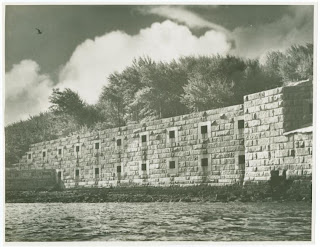Fort Totten Park is a former United States Army installation in Bayside, Queens on the north shore of Long Island. Decommissioned as a military base in the 1970s, Fort Totten is located at the head of Little Neck Bay where the East River widens to become the Long Island Sound. Although the United States Army Reserve maintains a presence since 1974, the property is currently owned by the City of New York.
Construction began in 1862 after the United States government purchased the land from the Willet family. The former federal military base was composed of 93 acres. Plans for the Civil War-era project were initially prepared by Captain Robert E. Lee in 1857. Construction was undertaken five years later to protect the eastern approach of New York Harbor from the Confederate States, along with Fort Schuyler across the East River in the Bronx.
The fort was named for General Joseph Gilbert Totten (1788-1864), Chief Engineer of the United States Army, regent of the Smithsonian Institution, and co-founder of the National Academy of Sciences.
The Willet's farmhouse, built in 1829, is located within the complex but predates the military installation. Also notable within the site is the historic fort itself, a 19th century artillery battery.
 |
| Fort Totten New York Public Library |
In 1987 the United States Department of Defense transferred 10 acres of land at Fort Totten to the New York City Department of Parks and Recreation as a gift for Bayside area parkland.
 |
| Men Marching Fort Totten New York Public Library |
